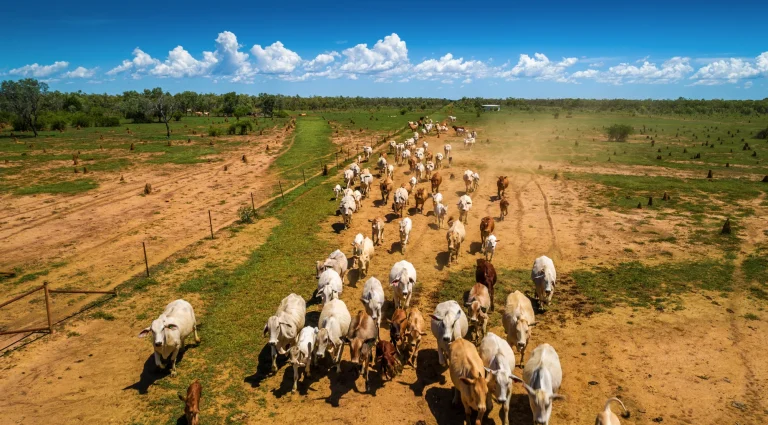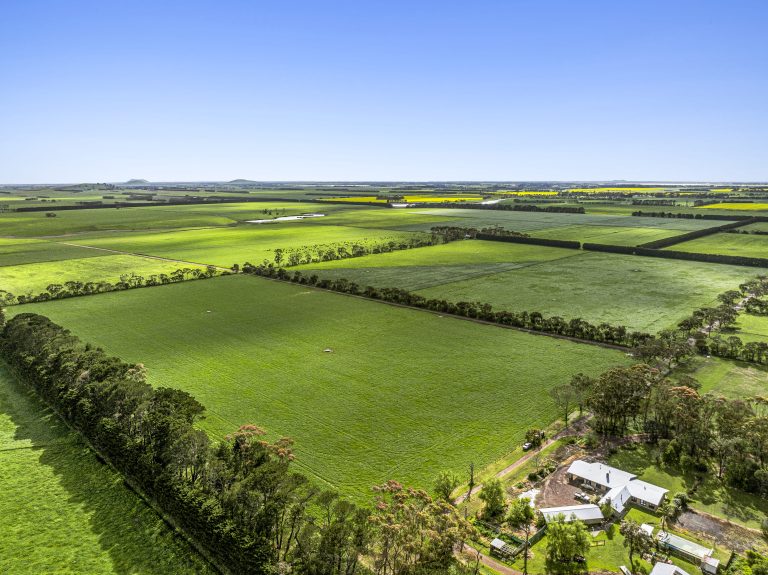Strategic Guidelines for Investing in the Australian Grazing Land Industry
Australia’s grazing land sector represents one of the world’s most extensive and diverse pastoral industries, encompassing vast cattle stations, sheep properties, and integrated livestock operations across the continent’s varied climatic zones. The sector’s scale, resilience, and export orientation create compelling investment opportunities for sophisticated investors seeking exposure to agricultural assets with strong fundamentals and diverse return profiles. For institutional investors, family offices, private equity groups, and high-net-worth individuals, developing comprehensive guidelines for investing in the Australian grazing land industry has become essential for navigating this complex market while optimizing risk-adjusted returns and long-term portfolio performance.
At Agribusiness Horizons, we understand that successful pastoral investment requires sophisticated analytical frameworks combined with deep understanding of regional markets, operational dynamics, and regulatory environments that shape long-term investment outcomes. Our specialized team provides comprehensive investment advisory services that help clients develop strategic approaches tailored to their objectives while navigating the complexities of Australia’s diverse grazing regions. This detailed guide establishes the fundamental principles, assessment methodologies, and strategic considerations that underpin successful grazing land investment across Australia’s premier pastoral areas.
Australian Grazing Land Investment Landscape
Australia’s pastoral sector encompasses extraordinary diversity in operational systems, climatic conditions, and market characteristics that create distinct investment segments requiring specialized analysis and strategic approaches. The continent’s vast scale enables operations ranging from intensive finishing properties to extensive cattle stations covering hundreds of thousands of hectares, each presenting unique risk-return profiles and management requirements.
The evolution of Australian grazing enterprises has incorporated advanced breeding programs, improved pasture management systems, and sophisticated infrastructure development that significantly enhance operational efficiency while creating competitive advantages in global livestock markets. Modern pastoral operations increasingly demonstrate professional management standards, technology integration, and sustainable practices that appeal to institutional investors seeking stable agricultural exposure.
Regional characteristics across Australia’s grazing areas reflect both climatic advantages and infrastructure development patterns that influence property values, operational efficiency, and investment attractiveness. Established agricultural regions typically offer superior infrastructure and market access while frontier areas may provide enhanced appreciation potential through development and operational improvement opportunities.
The integration of environmental stewardship practices, carbon sequestration programs, and regenerative grazing techniques creates additional value streams while positioning properties favorably with environmentally conscious investors and regulatory frameworks. These sustainable practices often generate premium market positioning while providing access to emerging revenue opportunities and government support programs.
Investment Framework Development
Strategic Objective Alignment
Successful grazing land investment begins with clear definition of investment objectives, risk tolerance, and operational involvement preferences that guide property selection and acquisition strategy development. Different investor types demonstrate varying preferences for property scale, management intensity, geographic location, and return characteristics that significantly influence investment criteria and evaluation methodologies.
Institutional investors typically prioritize properties demonstrating consistent cash flow generation, professional management systems, and scalable operational models that support long-term portfolio objectives. These sophisticated buyers require comprehensive financial analysis and risk assessment while seeking properties with established track records and minimal management complexity.
Family offices and private investors often focus on properties offering both financial returns and lifestyle benefits while providing opportunities for multi-generational wealth building and succession planning. These investors may accept higher management involvement while seeking properties with development potential and strategic positioning advantages.
Private equity groups and investment funds concentrate on properties offering value enhancement opportunities through operational improvements, consolidation strategies, or market repositioning that can generate superior returns through active management and strategic capital deployment.
Market Analysis and Opportunity Identification
Comprehensive market research forms the foundation of effective investment strategy development, requiring detailed understanding of commodity cycles, export market dynamics, and regional development trends that influence long-term property performance and appreciation potential. Professional market intelligence becomes essential for identifying optimal investment timing and strategic positioning within evolving market conditions.
Commodity market analysis addresses both current pricing conditions and long-term demand trends that affect operational profitability and property values through their influence on livestock markets and export opportunities. Understanding price cycle patterns helps optimize investment timing while supporting strategic planning for operational management and exit strategies.
Export market positioning and trade relationship analysis evaluate Australia’s competitive advantages in global livestock markets while assessing potential impacts from trade policy changes or market access developments. Properties with export market exposure often demonstrate enhanced returns while requiring sophisticated understanding of international market dynamics.
Regional development trends including infrastructure investment, processing facility expansion, and technology adoption create opportunities for enhanced property values and operational advantages. Early identification of these development patterns enables strategic positioning before widespread market recognition drives property values higher.
Due Diligence and Property Assessment
Operational Capability Evaluation
Land resource assessment encompasses soil quality, pasture composition, and carrying capacity analysis that determine fundamental productivity potential and operational sustainability for different livestock enterprises. Professional agronomic evaluation becomes essential for accurately assessing land capability and sustainable stocking rates that support long-term operational returns.
Water resource evaluation addresses both quantity and quality considerations including bore capacity, surface water access, and storage infrastructure that support livestock operations while providing drought resilience. Water security represents a fundamental value driver requiring comprehensive assessment of allocation rights, infrastructure adequacy, and long-term sustainability.
Infrastructure condition and adequacy assessment covers cattle yards, fencing systems, accommodation facilities, and machinery assets that directly impact operational efficiency and immediate capital requirements. Modern, well-maintained infrastructure typically reduces immediate investment needs while providing operational advantages and enhanced property marketability.
Management system evaluation addresses both current operational standards and succession planning arrangements that affect investment security and operational continuity. Properties with documented management systems and clear succession plans often demonstrate enhanced investment attractiveness while reducing transition risks and operational disruption potential.
Financial Performance Analysis
Historical performance analysis requires comprehensive review of operational records including stocking rates, livestock sales, and financial returns that provide insights into property productivity and management effectiveness. Detailed production records enable accurate cash flow modeling while supporting realistic return projections and risk assessment.
Cost structure evaluation addresses both fixed and variable costs including labor, feed, veterinary care, and infrastructure maintenance that affect net returns and operational efficiency. Properties demonstrating competitive cost structures typically generate superior returns while providing enhanced investment security and operational sustainability.
Market positioning and pricing realization assessment evaluate both current marketing arrangements and potential improvements through enhanced breeding programs, finishing strategies, or market development that may increase operational returns and competitive advantages.
Cash flow analysis and seasonal pattern evaluation consider both operational requirements and capital investment needs that affect investment returns and financing requirements. Understanding cash flow characteristics helps assess investment suitability while supporting appropriate financing structure development.
Regional Investment Considerations
Different grazing regions across Australia present distinct investment characteristics reflecting climatic conditions, infrastructure development, and market positioning opportunities that create varying risk-return profiles for investment evaluation. Understanding these regional differences enables more accurate investment assessment while supporting strategic portfolio development and geographic diversification.
Northern Australia’s extensive pastoral regions offer significant scale opportunities and development potential through improved infrastructure, genetics, and management systems. These areas may provide enhanced appreciation potential while requiring sophisticated risk management and patient capital approaches for successful development.
Eastern Australia’s established grazing areas typically provide more consistent operational conditions and infrastructure advantages while offering opportunities for operational optimization and value enhancement through improved management systems and technology adoption.
Southern Australia’s intensive grazing regions support higher stocking rates and more diverse operational systems while commanding premium land values that may limit appreciation potential but provide operational stability and consistent returns.
Western Australia’s diverse pastoral areas encompass both established operations and frontier development opportunities that provide varying risk-return profiles depending on location, infrastructure development, and market access considerations.
Australian Grazing Investment Strategy Matrix
| Investment Approach | Risk Profile | Capital Requirements | Management Involvement | Return Characteristics |
|---|---|---|---|---|
| Premium Established Properties | Low | Very High | Minimal | Stable Income Plus Appreciation |
| Development Opportunities | High | Moderate | Intensive | High Appreciation Potential |
| Operational Improvement | Moderate | High | Moderate | Enhanced Income Generation |
| Portfolio Consolidation | Low | Very High | Professional | Steady Long-term Returns |
| Distressed Asset Acquisition | Very High | Variable | Very High | Potentially High Returns |
This framework demonstrates how different approaches to pastoral property investment strategies require varying risk tolerance, capital availability, and management capabilities while offering distinct return characteristics and strategic benefits for portfolio development.
Agribusiness Horizons’ Grazing Investment Expertise
Our comprehensive approach to grazing land investment advisory combines extensive market knowledge with sophisticated analytical capabilities to help clients identify and evaluate premium opportunities across Australia’s diverse pastoral regions. We provide specialized guidance on investment strategy development, due diligence coordination, and operational assessment that supports informed decision-making throughout the investment process.
Through our strategic advisory and consulting services, we help clients develop targeted investment criteria and evaluation frameworks that align with their strategic objectives while considering market dynamics and operational factors that drive long-term performance. Our systematic approach addresses all relevant investment considerations while providing practical guidance on opportunity identification and assessment.
We maintain extensive networks of pastoral industry specialists including agronomists, veterinarians, and operational managers who provide additional expertise for complex property evaluation and strategic planning requirements. This collaborative approach ensures comprehensive analysis while addressing technical aspects that significantly impact investment outcomes and operational success.
Our experience developing guidelines for investing in the Australian grazing land industry enables us to provide practical guidance on market positioning, operational optimization, and value enhancement strategies that maximize investment performance while managing risk exposures effectively.
Risk Assessment and Management
Operational Risk Factors
Climate variability and drought management capabilities significantly impact pastoral property performance while affecting both immediate returns and long-term sustainability. Properties with robust drought management strategies typically demonstrate enhanced investment stability while providing operational resilience during challenging environmental conditions.
Market volatility and commodity price cycles affect revenue generation and investment returns through their influence on livestock values and operational profitability. Understanding price cycle patterns helps optimize investment timing while supporting strategic planning for operational management and marketing strategies.
Management transition and succession risks affect operational continuity while influencing investment security and performance consistency. Properties with professional management systems and clear succession plans often demonstrate reduced operational risks while providing enhanced investment stability.
Disease management and biosecurity capabilities impact both immediate operational performance and long-term investment security through their influence on livestock health and market access opportunities. Properties with comprehensive health management programs typically demonstrate superior operational resilience while reducing regulatory risks.
Financial Risk Management
Leverage optimization and financing structure development affect both investment returns and risk exposure while influencing cash flow characteristics and financial flexibility. Professional financial guidance becomes valuable for structuring investments that balance return enhancement with financial stability requirements.
Cash flow management and seasonal financing requirements address both operational needs and capital investment opportunities that affect investment performance and financial sustainability. Understanding cash flow patterns helps optimize financing arrangements while supporting strategic capital allocation decisions.
Currency exposure and export market risks affect properties with significant export orientation through their impact on commodity pricing and revenue generation. Properties with diversified market exposure typically provide enhanced risk management while maintaining competitive return potential.
Interest rate sensitivity and capital market conditions influence both property values and financing costs while affecting investment attractiveness and portfolio performance. Understanding market dynamics helps optimize investment timing while supporting strategic financing decisions.
Technology Integration and Modern Operations
Contemporary grazing enterprises increasingly integrate advanced technologies including remote monitoring systems, precision livestock management, and data analytics capabilities that enhance operational efficiency while providing competitive advantages. These technology investments often represent significant value drivers requiring appropriate assessment and strategic planning for optimization.
Remote monitoring systems for livestock health, pasture conditions, and infrastructure performance provide operational advantages while reducing labor requirements and improving management decision-making capabilities. Properties with advanced monitoring systems typically demonstrate enhanced operational efficiency while providing competitive advantages.
Genetic improvement programs and breeding optimization systems support enhanced livestock performance and premium market positioning that can significantly impact operational profitability and investment returns. Properties with established genetic programs often command premium valuations while providing competitive market advantages.
Precision grazing management and pasture optimization technologies enable enhanced land utilization while supporting sustainable operations and improved environmental outcomes. These management systems often generate operational benefits while providing environmental credentials that enhance market positioning.
Sustainability and Environmental Considerations
Environmental stewardship and sustainable grazing practices increasingly influence investment attractiveness through their impact on regulatory compliance, market positioning, and operational costs. Properties demonstrating superior environmental management often command premium valuations while providing enhanced market appeal and operational advantages.
Carbon sequestration opportunities and regenerative grazing practices create additional revenue streams while supporting environmental objectives that align with investor sustainability requirements and regulatory frameworks. Understanding carbon market dynamics becomes important for evaluating these emerging value opportunities and operational approaches.
Biodiversity conservation and habitat management programs create additional value streams while supporting environmental stewardship objectives that enhance regulatory compliance and market positioning. These programs often attract government support while providing operational and marketing advantages.
Water conservation and sustainable land management practices enhance long-term operational viability while reducing environmental impact and regulatory risk exposure. Properties with advanced sustainability practices often demonstrate enhanced market positioning while providing operational cost advantages.
Financial Structuring and Investment Planning
Capital Structure Optimization
Investment structure development addresses ownership arrangements, financing sources, and tax optimization strategies that affect both immediate returns and long-term investment performance. Professional advisory services become valuable for structuring investments that maximize after-tax returns while providing operational flexibility.
Partnership arrangements and joint venture structures provide opportunities for risk sharing, expertise combination, and capital efficiency that may enhance overall investment returns while reducing individual risk exposures. These arrangements require careful structuring and ongoing management coordination for optimal effectiveness.
Debt financing optimization considers both immediate capital requirements and long-term financial flexibility while addressing interest rate exposure and repayment capacity. Understanding financing options helps optimize capital efficiency while managing financial risks and cash flow requirements.
Tax planning and structure optimization address both acquisition costs and ongoing operational tax efficiency while considering capital gains treatment and succession planning requirements. Professional tax guidance becomes essential for maximizing after-tax investment returns while maintaining operational flexibility.
Exit Strategy Planning
Succession planning and intergenerational transfer considerations affect both investment structure and long-term strategic planning while addressing family objectives and tax optimization requirements. Properties with clear succession frameworks often demonstrate enhanced investment attractiveness while providing strategic planning advantages.
Market liquidity and disposal options consider both immediate marketability and long-term exit opportunities that may affect investment flexibility and return realization timing. Properties with broad market appeal typically provide enhanced exit flexibility while supporting strategic planning requirements.
Value enhancement and optimization strategies address both operational improvements and strategic positioning initiatives that may enhance disposal values while providing competitive advantages during ownership periods. Understanding value drivers helps optimize investment outcomes while supporting strategic planning.
Portfolio integration and consolidation opportunities may provide enhanced operational efficiency and strategic positioning while supporting long-term investment objectives and risk management requirements.
Market Trends and Future Opportunities
Australia’s grazing industry continues evolving through technology adoption, sustainability initiatives, and market development that create new investment opportunities while requiring ongoing strategic adaptation. Understanding these trends helps position investments for enhanced competitiveness while supporting long-term portfolio development and performance optimization.
Global food security trends and protein demand growth create long-term opportunities for well-positioned Australian grazing enterprises through enhanced export market access and premium pricing opportunities. Properties with export market positioning often demonstrate superior long-term appreciation potential.
Precision livestock management and technology integration create opportunities for enhanced operational efficiency and competitive positioning that may significantly improve investment returns while reducing operational complexity and management requirements.
Sustainability certification and environmental stewardship programs increasingly influence market positioning and buyer preferences while creating additional revenue opportunities through premium market access and government support programs.
Conclusion
These guidelines for investing in the Australian grazing land industry provide a comprehensive framework for evaluating opportunities while managing risks in one of the world’s most extensive and diverse pastoral sectors. Successful investment requires sophisticated analysis of operational factors, market dynamics, and regional characteristics that drive long-term performance while providing appropriate risk-adjusted returns.
Professional guidance becomes essential for navigating the complexities of pastoral property investment while developing appropriate strategies for value enhancement and risk management. The evolving nature of grazing enterprises and market conditions requires ongoing analysis and strategic adaptation to maintain competitive investment performance and portfolio optimization.
Consider these strategic questions as you develop your grazing land investment approach: How will climate variability and adaptation strategies affect long-term operational costs and investment returns in your target regions? What role will technology integration and sustainable practices play in maintaining competitive advantages and market positioning? How can you structure grazing land investments to optimize both immediate returns and long-term appreciation while managing operational and environmental risks effectively?
At Agribusiness Horizons, our specialized expertise in pastoral property investment analysis and comprehensive understanding of Australia’s grazing industry help clients develop winning investment strategies that optimize outcomes while managing risks effectively. Contact our experienced team today to discuss how our investment advisory services and market intelligence can support your grazing land investment objectives and portfolio development goals.



